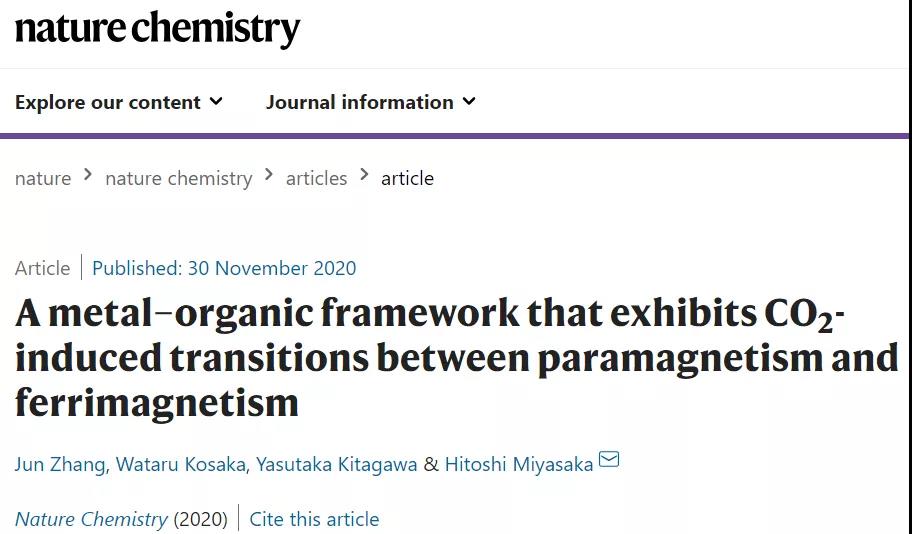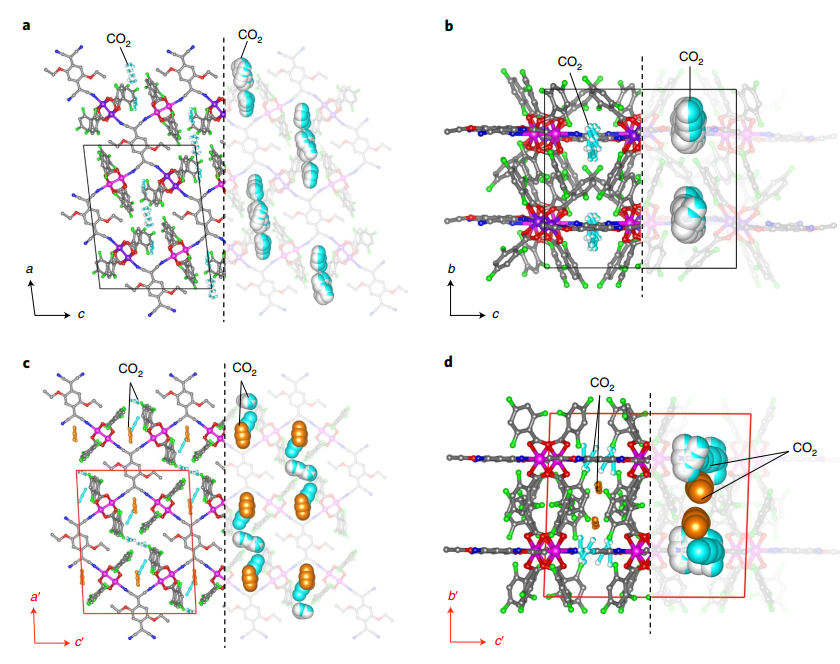Nature Chemistry: When MOF meets CO2, it changes its heart?
QQ Academic Group: 1092348845
Detailed

Author: Jun Zhang
Corresponding author: Hitoshi Miyasaka
Correspondence Unit: Tohoku University, Japan
If there are enough building blocks, metal organic frameworks (MOFs) can combine magnetic order and porosity. This makes MOFs a promising platform for the development of stimulus-responsive materials that exhibit very different magnetic properties depending on the presence or absence of guest molecules in their pores.
Recently, Hitoshi Miyasaka of Tohoku University in Japan reported a CO2-responsive magnetic MOF, which changes from submagnetism to paramagnetism when CO2 is adsorbed, and returns to a submagnetic state when CO2 is desorbed.

Figure 1. CO2 adsorption, crystal structure change and infrared spectrum.
The researchers used paddle wheel type [Ru2(F3PhCO2)4] complex ([Ru2]) as D and TCNQ(OEt)2 as A, and then assembled D2A-layered ferrimagnet from D:A=2:1
[{Ru2(F3PhCO2)4}2TCNQ(OEt)2]·3DCM (1-DCM; F3PhCO2−, 2,4,6-trifluorobenzoate; DCM, dichloromethane). Compound 1-DCM has a monoclinic crystal system C2/c space group, in which four CN groups of TCNQ(OEt)2 coordinate with [RU2] units to form a fishnet-like two-dimensional network on the (020) plane.

Figure 2. Crystal structure.
The study found that the ferrimagnetic material is a layered MOF with the molecular formula [D+–A-–D], which is a paddle wheel diruthenium (ii) cluster bridged by trifluorobenzoate as an electron donor ( D) With diethoxytetracyanoquindimethane as the electron acceptor (A). When CO2 is adsorbed, MOF undergoes in-plane electron transfer and structural transformation to form a [D-A-D] paramagnetic form.
This magnetic phase transition, and the subsequent change in the electronic conductivity and dielectric constant of the MOF, are all electronically stabilized by the guest CO2 molecules contained in the framework.

Figure 3. Changes in magnetic properties under CO2 adsorption.
references
Zhang, J., Kosaka, W., Kitagawa, Y. et al. A metal--organic framework that exhibits CO2-induced transitions between paramagnetism and ferrimagnetism. Nat. Chem. (2020).
DOI: 10.1038/s41557-020-00577-y
https://doi.org/10.1038/s41557-020-00577-y
Information source: Nanoman
This information is from the Internet for academic exchanges. If there is any infringement, please contact us and delete it immediately
- Previous: Zhang Junji Angew, Eas
- Next: A Rising 2D Star: Nove


 Academic Frontier
Academic Frontier
